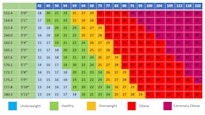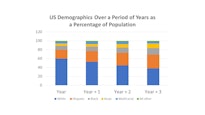2025 Guide on the General Educational Development (GED) Test
- What Is the GED Test?
- Where Is the Certificate of High School Equivalency Accepted?
- What Is Being Assessed On The GED Exam?
- GED Test - Question Formats and Type
empty
empty
empty
empty
- What to Expect When Taking the GED Exam in 2025
empty
empty
empty
empty
- Where Does the GED Test Take Place?
- What to Take to the GED Exam
- GED Test Scores
- How to Register for the GED Exam
- How to Do Well on the GED Test in 2025
empty
empty
empty
empty
- Frequently Asked Questions
- Final Thoughts
What Is the GED Test?
The GED Test is aimed at adults who did not receive a high school diploma, but who wish to enter college education or improve their career prospects.
Success in the GED Test leads to the awarding of a Certificate of High School Equivalency.
Rules of eligibility for the GED Test generally include:
- A minimum age limit between 16 and 18 years, dependent on the US state
- Permission from parents or the relevant school district for students who are under 17 years old
- In some US states, that the student is a state resident
Where Is the Certificate of High School Equivalency Accepted?
The Certificate of High School Equivalency is accepted at around 97% of universities and colleges in the US and Canada.
It is also accepted by many overseas educational establishments, but it is always recommended that you check with the college or university of your choice.

What Is Being Assessed On The GED Exam?
The purpose of the GED exam is to measure academic proficiency in the following areas to ensure that the student has a level of learning equivalent to or higher than that needed to earn a high school diploma:
- Reasoning through language arts
- Science
- Social studies
- Mathematical reasoning
GED Test - Question Formats and Type
The GED Test is computer-based but each section of the test varies in format and type of question.
Reasoning Through Language Arts
This section covers reading comprehension and writing. The test is split into three parts – two question sections and one essay.
In the first two parts of this test, the questions will generally be multiple-choice.
Each question features one or more passages of writing and a related question.
Example Question
1. The following question relates to this passage of prose fiction:
When I look back on my life’s successes, I can’t help but think of my father.
I vividly remember that day, the sun streamed in through the open window as I opened my eyes and stretched my limbs in expectation of another idle summer day. As I peered bleary-eyed out of the window, I saw the other children running down to the stream at the end of the field, hoping to splash their toes in the water and collect tadpoles in the glass jars hanging from their belts.
As I ran downstairs in excited expectation, I noticed my father standing at the bottom of the stairs with my two brothers who already held their books. He looked into my excited eyes and knew almost immediately that I planned to while away the day by the river.
“Today is a day of study, Pacey.” he said firmly but kindly.
Seeing my face fall, he added,
“I saw you look longingly at the river but you will not regret the time spent on your studies. I want you to have a better life than I ever dreamed of when I was your age and you must make some sacrifices. Work hard today and play harder tomorrow.”
My father’s words stuck with me for many years and every time I look out of the window at the summer sun outside, I remember his lesson and ensure I put in the hard work before I play.
What impression is the narrator attempting to convey of his father in the above passage?
a) His father is neglectful.
b) His father wants the narrator to have opportunities that he (the father) never had.
c) His father loves his other children more than he loves the narrator.
d) His father would rather spend time fishing and gardening, than with the narrator.
2. Read the following passage about the growing number of devices (computers, tablets, smartphones) available to the public and answer the question below:
Around 96% of Americans now own a mobile device and around half own a tablet computer. Increasing ownership of mobile devices has changed all of our lives in good and bad ways, from the way we shop, how we make money, how we collect information, and how we communicate and share parts of our lives.
One of the main changes in behavior caused by the increased availability of mobile devices is that we can now shop online on the go and from any location, rather than visiting high-street stores. E-commerce opportunities have opened up where they did not before exist, allowing businesses to reach more consumers than ever before. However, there is also an increase in competition and price awareness from consumers which can affect the profitability of businesses.
What can be concluded from the above passage?
a) That the amount of time spent on devices is leading to a populace who are unhealthy and anti-social.
b) That certain changes in the behavior of the populace are intrinsically linked to the availability of devices.
c) That the speed with which new devices are being developed is accelerating.
d) That the growing use of devices is a bad thing.
The final section of the Reasoning Through Language Arts assessment test provides the student with an essay to read, and then asks them to write a response in essay form. As the essay is written on a computer, the student’s typing skills are also tested.
Science
This section tests the student on their understanding of:
- Scientific theory and methods
- Scientific symbols
- How to interpret scientific data
- The use of numbers and graphics in science
There is one part to this test, featuring multiple-choice, fill in the blank, hot spot, drop-down, and drag and drop questions.
All information needed to answer each question is included in the test paper.
The question may feature a graphic such as a chart or a table with related questions.
Example Question
Following a passage about gravity, the student may be asked:
1. As an object moves towards the planet Earth, which of the following is true?
a) The gravitational pull decreases and the weight increases
b) The gravitational pull decreases and the weight decreases
c) The gravitational pull increases and the weight increases
d) There is no change to gravitational pull or weight

2. Study the chart above and decide which of the following statements is true:
a) A person who is 167.6 cm in height and weighs 104 kg is on the cusp of healthy and overweight.
b) A person who is 180.3 cm in height and weighs 77 kg is at the lower end of healthy.
c) A person who is 165.1 cm in height and weighs 73 kg has the same BMI as a person who is 180.3 cm and weights 91 kg.
d) A person who is 162.5 cm in height and weighs 59 kg has a lower BMI than a person who is 177.8 cm and weighs 73 kg.
Social Studies
The subjects covered in this section include:
- Economics
- Geography and the world
- Civics and government
- US history
There is one section to this test and questions may be multiple-choice, drop-down, drag and drop, or select an area.
Example Question

A student may be presented with a chart which expresses US demographics over a period of years as a percentage of the population.
Based on the data in the chart, which of the following is true?
a) The population group to see the largest increase percentage-wise over the period expressed in the chart is the Asian group.
b) The only population group to see a decrease percentage-wise is the White group.
c) In Year + 1, the Black population outnumbered the Hispanic population.
d) In Year + 3 , the Asian population outnumbered the Black population.
Mathematical Reasoning
This section covers:
- Basic math and algebra
- Graphs and functions
- Geometry
There are two parts to this test and the questions are a mixture of multiple-choice, drop-down, drag and drop, select an area, and fill in the blank.
Example Questions
1. A man hires a digger to excavate a plot in his garden. He hires the digger for four days and pays $1,176.
What is the daily rate?
a) $175
b) $294
c) $274
d) $197
2. If x = 6 and y = –12, what is the value of 36x – 2y2
a) –84
b) –82
c) –90
d) –72
What to Expect When Taking the GED Exam in 2025
Familiarity with the subjects that will be covered and the format the questions will take is just one aspect of preparing for the GED exam.
It is always advised that a student also knows what will happen on the day of the GED exam.
The GED exam is computer-based, but each section is different in the format of the questions, the time limit allowed and the test conditions:
Reasoning Through Language Arts
- There are three parts (two question parts and one essay)
- The test is 150 minutes long, with 10-minute breaks between each section
- 45 minutes is allowed for the essay part
Science
- The test has only one part
- The test is 90 minutes long without a break
- The student will be provided with an online calculator
Social Studies
- The test has one part
- The test is 70 minutes long without a break
- The student will be provided with an online calculator
Mathematical Reasoning
- The test has two parts
- The test is 115 minutes long with no break
- The student will be provided with an online formula sheet and calculator
Where Does the GED Test Take Place?
The GED Test can be taken at many schools and colleges in the US and overseas. A full list of participating educational establishments can be found on the GED website.
What to Take to the GED Exam
The student must bring a form of government-issued photo ID on the day, such as a passport or driving license. It is also recommended that they bring proof of their confirmation letter or email.
Electronic devices, such as smartphones or smartwatches, are not allowed in the test room.
GED Test Scores
GED Test scores are generally available on the day that the test is taken but confirmation will be emailed to the student.
Each section of the GED Test (science, social studies, etc.) are scored on a range of 100 to 200, as follows:
- Below pass 100 – 144
- Pass 145 – 164
- GED College ready 165 – 174
- GED College ready + credit 175 – 200
How to Register for the GED Exam
Register for the GED exam through the GED website.
Each assessment test (science, social studies, etc.) costs $75.
The total cost for taking all four assessment tests is $300.
How to Do Well on the GED Test in 2025
Preparation is key to offer the best chance of success in the GED Test, and there are several ways that students can ready themselves for exam day:
Self Study
If the student is confident in their academic skills, self-study may be all that is required in the run-up to the GED exam.
The student should assess their knowledge across the four areas that will be tested to identify their strengths and weaknesses.
Extra time should be spent on areas where the student’s academic knowledge is weak, but attention should be given to all subjects that will be tested.
GED Preparation Classes
If the student feels they would benefit from study in a classroom environment, GED preparation classes are offered by many colleges and educational establishments.
To find the nearest GED preparation class, use the GED Find a Prep Center online tool.
The benefit of using a GED preparation class over self-study alone is that the instructors have specialist knowledge of the GED Test and experience of assisting students to prepare.
Sample GED Test Questions
Answering sample GED Test questions can prove beneficial in several ways.
First, they familiarize the student with the question formats.
Second, they test the student’s knowledge across the four areas.
Finally, answering a full sample GED Test can provide a dry-run for answering questions within the set time limit for each section. All of these can help to build a student’s confidence.
Sample GED Test questions can be sourced online from:
Official Mock Exam
Whether a student feels confident enough to take the GED Test already or wants to get an idea of how well they will do, sitting the official GED mock test can be a useful route to take.
The mock exam is not free. The cost is $6 per subject area or $20.99 for all four.
You can buy the mock tests through the GED website.
Frequently Asked Questions
In the UK, the equivalent of a GED is often the General Certificate of Secondary Education (GCSE) or other recognized qualifications like Functional Skills or Access to Higher Education courses.
No, the GED is not equivalent to A-levels in the UK. A-levels are a higher level of qualification, typically taken after completing the General Certificate of Secondary Education (GCSE).
While the GED and a high school diploma signify the completion of secondary education, they differ. A high school diploma is earned through traditional high school attendance, while a GED is obtained by passing a standardized test.
To get your GED online, you can register for an online GED program, study the required subjects, and then schedule and take the official GED test at an approved testing center.
The difficulty of getting a GED varies for each individual. Adequate preparation and study significantly increase the chances of success.
The cost of the GED test can vary by location, but it typically ranges from around 150. Some states offer subsidies or financial assistance.
To pass the GED, you generally need to score at least 145 on the four subject tests. The total minimum passing score is 580.
Yes, most colleges and universities in the United States accept the GED as an equivalent to a high school diploma for admissions.
Yes, a calculator is provided for specific portions of the GED test, particularly during the mathematics section.
The math part of the GED test includes questions on quantitative problem-solving, algebraic problem-solving, and geometry. It assesses a range of mathematical skills and concepts relevant to real-world scenarios.


